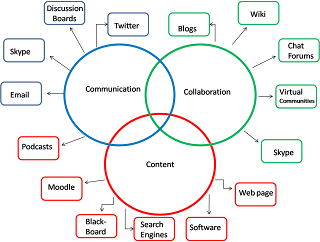We know that it is important for educators to utilize the most up to date technical resources as a tool to enhance the educational experiences of our students (Siemens, 2008). Additionally, the mixing of formal and informal strategies is imperative to have a successfully learning experience (Siemens, 2008).
Furthermore, students must have clear directions on how to complete the assignments, and a clear understanding of how they are going to be assessed. Most useful tool is the rubric to help students to understand what is expected of them. Instructors must give immediate feedback and assist students in a timely and prompt manner (Durrington, Berrhill, & Swafford, 2006).
References:
Durrington, V. A., Berryhill, A., & Swafford, J. (2006). Strategies for enhancing student interactivity in an online environment. College Teaching, 54(1), 190−193. Academic Search Premier database; Accession Number: 19754742
Siemens, G. (2008, January). Learning and knowing in networks: Changing roles for educators and designers. ITForum.
